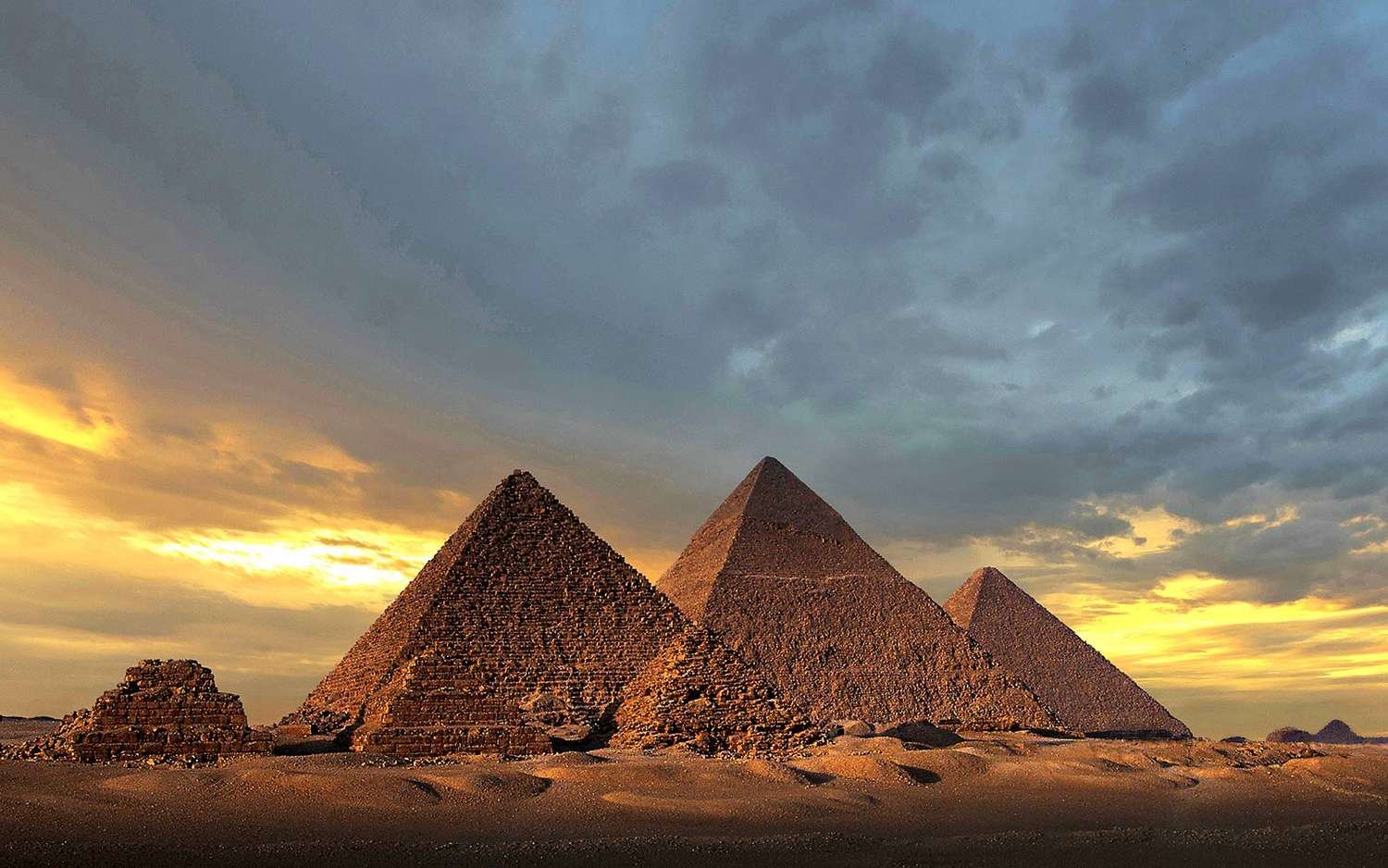You’ve reached our comprehensive overview of the incredible pyramids of Giza. This study delves into these ancient Egyptian landmarks’ history, architecture, and cultural significance. The Giza Pyramids, one of human civilisation’s most iconic and lasting symbols, never cease to amaze and mystify visitors worldwide.
A Glimpse into Ancient Egypt
Unveiling the Past
Just beyond Cairo in Egypt are the incredible Giza Pyramids, which attest to the extraordinary achievements of ancient Egyptians. Over 4,500 years ago, during Egypt’s Old Kingdom period, these magnificent tombs were constructed as the ultimate resting places for pharaohs and their queens.
Architectural Marvels
Three primary pyramids make up the Giza Pyramids: the Great Pyramid of Khufu, the Pyramid of Khafre, and the Pyramid of Menkaure. Moreover, These structures are a testament to the ancient Egyptians’ engineering skills and creativity.
The Great Pyramid of Khufu
The oldest and largest pyramid, the Great Pyramid of Khufu, always leaves visitors speechless. About 2 million pieces of limestone, weighing an average of 2.5 metric tons each, were meticulously stacked to create this incredible structure. Moreover, The ancient builders’ precision and accuracy are remarkable, considering the crude tools and technologies they used.
The Pyramid of Khafre
The Great Pyramid is situated close to Khafre’s Pyramid. This pyramid stands out from others due to its stunning form and the original limestone casing that still partially encases the upper segments. In addition to the pyramid itself, the nearby Sphinx is also worth mentioning because of its role as a guardian of the complex.
The Pyramid of Menkaure
The Pyramid of Menkaure rounds off the enormous three pyramids and adds its unique allure to the scene. Despite its modest proportions, the building is notable for its ornate lobby and well-preserved granite cladding.
Unlocking Ancient Secrets
Aligning with the Stars
The incredible alignment of the Giza Pyramids with celestial bodies only deepens the enigma surrounding their construction and purpose. For instance, the Great Pyramid’s sides align nearly precisely with the cardinal directions of a compass. The entry corridor of the Pyramid of Khafre also coincides with the setting sun on the summer solstice.
Enigmatic Hieroglyphs
Visitors may see incredible hieroglyphic inscriptions inside the pyramids that shed light on ancient Egyptian society and rituals. Moreover, These magnificent engravings depict mythical stories, religious practices, and the divine nature of the pharaohs. The decipherment of these hieroglyphs has provided crucial insight into the history and culture of ancient Egypt.
Tomb Chambers and Artifacts
Visitors can explore the inner burial chambers of the pyramids to gain a deeper understanding of the intricate design and construction of these structures. However, The pharaohs furnished these sacred spaces with their earthly possessions to ensure a smooth transition into the afterlife. Archaeologists have unearthed statues, jewels, funeral furniture, and other objects from these tombs. This discovery provides valuable insights into ancient Egyptian society’s wealth and religious beliefs.
Preserving the Legacy
Challenges and Conservation Efforts
Maintenance of the Giza Pyramids is challenging for many reasons, including weathering, natural degradation, and the influence of tourism. In addition, We have initiated several national and international conservation measures to conserve and maintain these historic treasures. Teams of dedicated professionals are actively carrying out environmental monitoring and restoration works to ensure that the pyramids will continue to astound future generations.
A Beacon of Cultural Significance
In 1979, UNESCO acknowledged the Giza Pyramids’ immense cultural and historical significance by designating them as World Heritage Site. In addition, This prestigious award recognizes their global importance and the need to preserve them. The pyramids testify to Egyptian culture’s superiority, foresight, and enduring legacy.
Summary
In conclusion, the Giza Pyramids are iconic works of architecture that have wowed visitors for centuries. These architectural masterpieces still exist as emblems of ancient Egypt’s grandeur and richness, inspiring awe in the hearts of tourists who visit them. Let’s explore their rich histories, mysteries, and cultural importance while preserving them for future generations.









